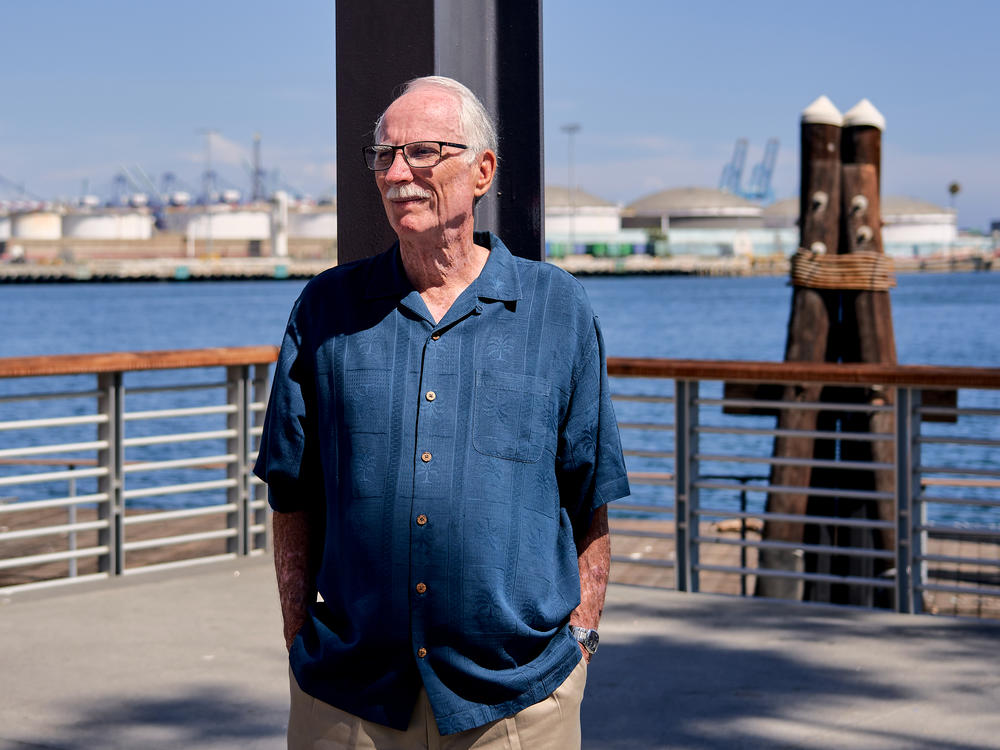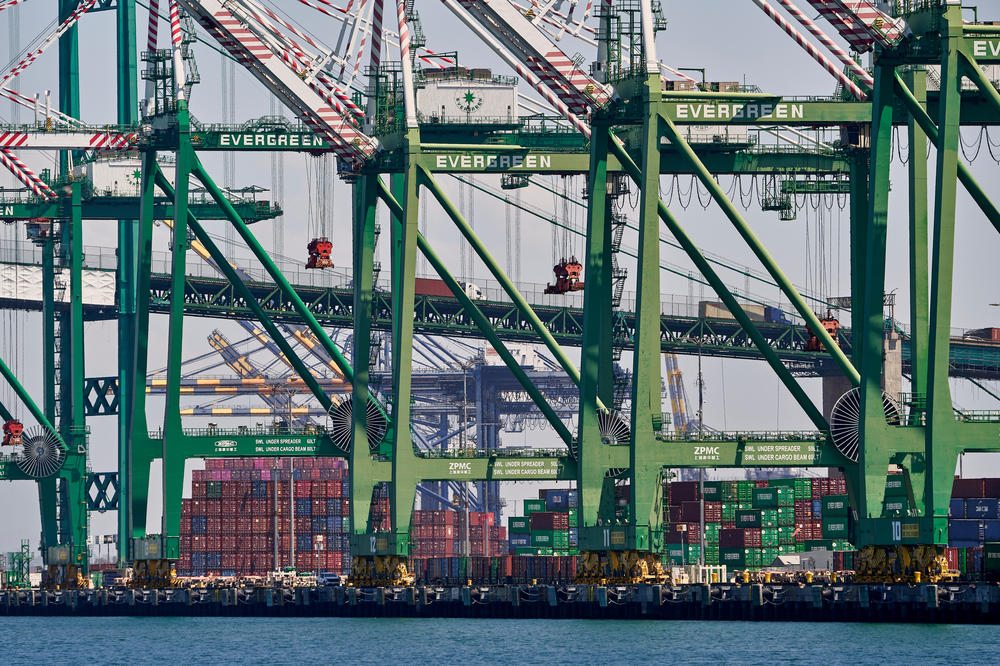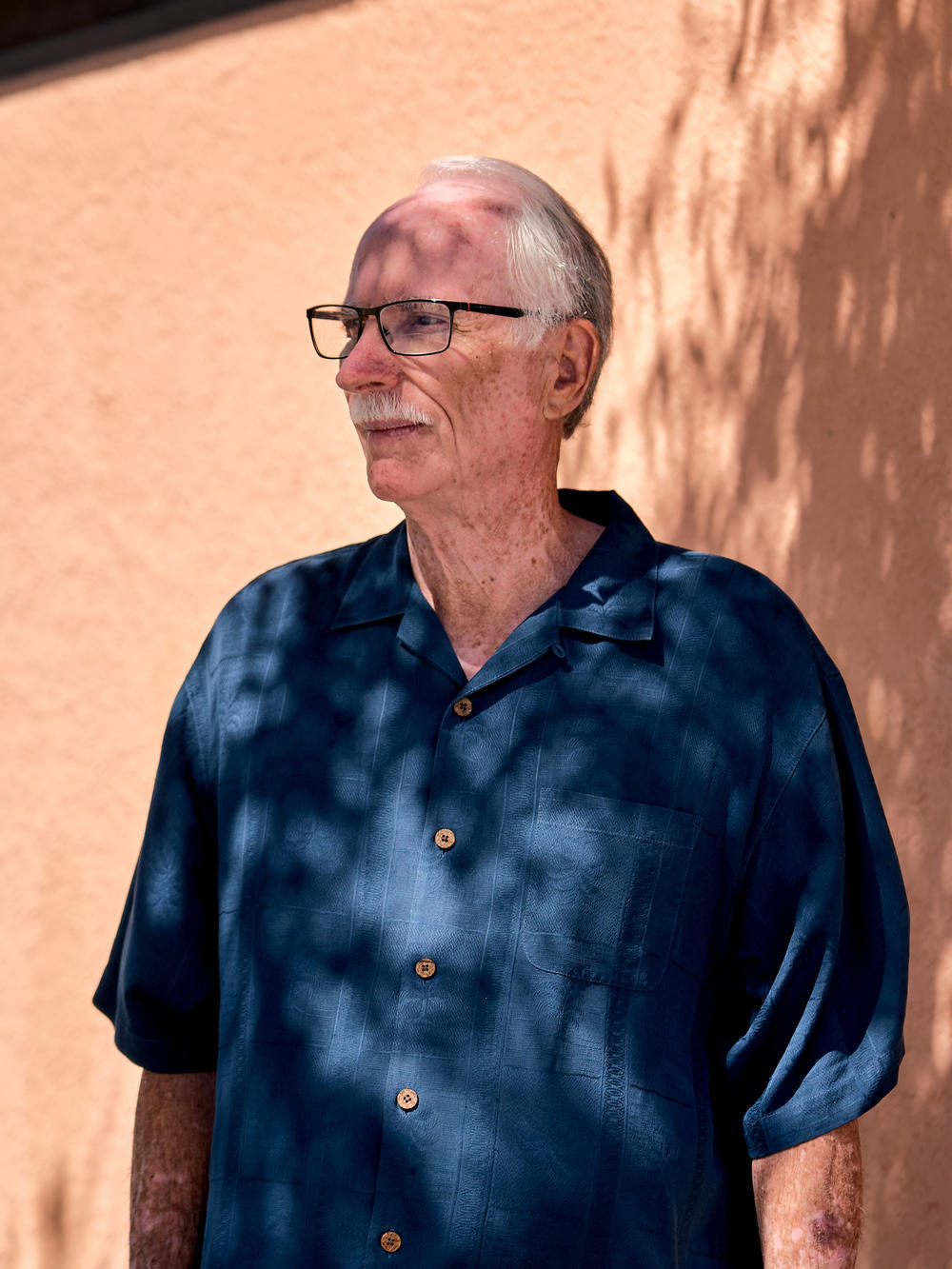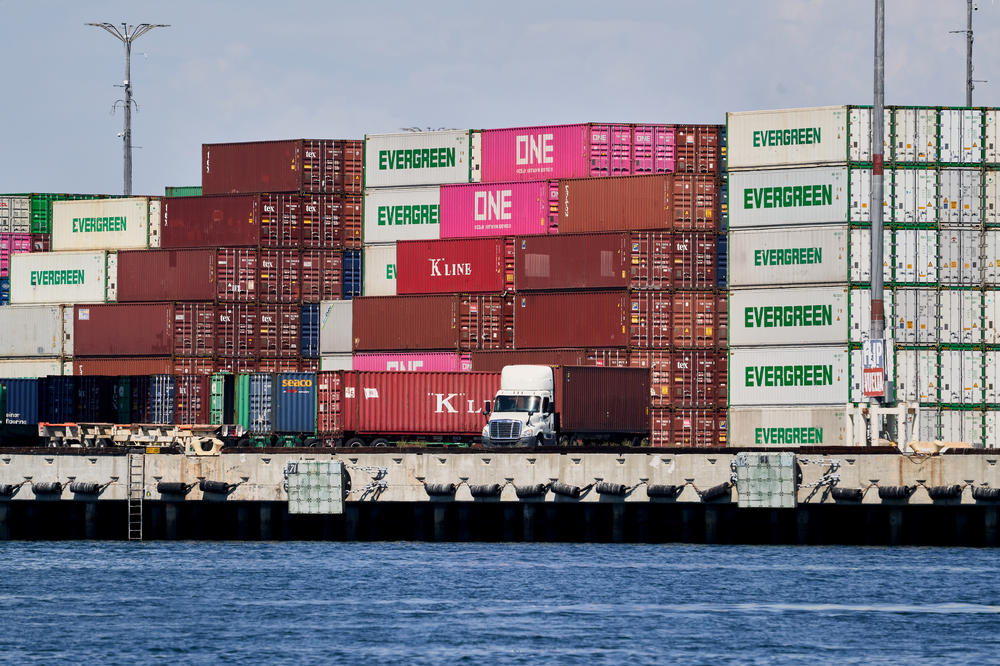Section Branding
Header Content
Retired labor leader says his former union must think outside the box to save jobs
Primary Content
The first time James "Spinner" Spinosa saw a driverless machine pick up a massive shipping container and move it through a shipyard was during a trip to Rotterdam in 1989.
He was amazed, and in equal measures, alarmed.
A rising star in the West Coast dockworkers union, his mind went immediately to his union brothers and sisters back home – truck drivers and crane operators – whose jobs would be in jeopardy.
But that wasn't all. The same day, Spinosa peeked through an open door into a room that was not part of the tour.
"Lo and behold, here was about six or eight people on computers, interfacing with what they were showing us in the yard," he says. "I knew then, this was major changes. We have to get this work."
"Machines don't pay taxes"
Fast forward 33 years. Automation poses a bigger threat to union jobs now than ever before. Three terminals at the Ports of Los Angeles and Long Beach are now partly or fully automated, and several more are contemplating it. It's become the hot-button issue in the contract negotiations between dockworkers and the shipping industry that started in May.
Now retired, Spinosa takes a forward-looking view, believing the union must look for the jobs of tomorrow to avoid being left behind.
But at the waterfront, current union dockworkers fear giving up any more ground.
"These machines don't pay taxes. They don't help our local economy. They don't help with infrastructure," says Yvette Bjazevic, who's worked on the docks for 20 years. "We should all be outraged."
But Spinosa's take on the future is shaped by his experiences leading the International Longshore and Warehouse Union through tumultuous times.
Rather than block technological advancements, Spinosa doubled down on the fight for union jobs. Whatever technology was being used on the docks, he wanted to make sure that union workers were there, ready to take on new roles.
It's an approach similar to one the ILWU has embraced almost since its founding.
Hooks used to bring in crates of fruit. Now cranes haul massive shipping containers
Spinosa followed his uncles to the waterfront in 1969, when the ships crossing the ocean were much smaller — like rowboats, he jokes — and most cargo was still handled by hand. Longshoremen used different types of hooks for different types of cargo, be it crates of fruit, bales of cotton, or sacks of borax.
"The old-timers that we worked with, they would take you under their wing, and they would show you how to actually handle cargo, stow cargo properly, and stay safe," Spinosa recalls.
But that all changed with the advent of shipping containers, the colorful steel boxes that are now standard across the global shipping industry.
A controversial agreement
No longer were gangs of longshoremen needed in the holds of ships. A single crane operator could lift entire containers full of goods at once.
"Instead of having 75 or 90 men working on a ship, you might have many fewer, 10 or so, able to do the same amount of work or more work," says historian Robert Cherny, author of an upcoming biography of the ILWU's longtime president Harry Bridges.
The union had foreseen the threat to jobs then. In the 1960s, Bridges negotiated a controversial agreement. The union would accept the use of containers and cranes and other forms of mechanization as long as there was something in it for the workers. Above all, guaranteed wages — regardless of whether there was work.
"As far back as the late 1930s, early 1940s, the union had always said they were willing that the employers would introduce labor-saving machinery, but that the union had to be consulted, and the union had to essentially get a piece of it," says Cherny.
Spinosa sums it up this way: Union dockworkers would go along with mechanization, as long as mechanization took them along.
"Whatever work is necessary for the future, hopefully we're there and we're doing it"
Spinosa clung to that basic tenet throughout his career. In the 1980s, he accepted that computers were bringing efficiencies to the work of marine clerks, who had for decades mapped out the movement of containers by hand. But he fought to ensure that a union worker would be in front of those computers.
"As long as equipment needs to be moved on the terminals, it's done by the ILWU," he says. "The problem arises when it becomes robotic."
Spinosa worries that the union doesn't know enough about the technology being brought to the ports today to fight for the jobs that may come open tomorrow. Employers in the shipping industry are not exactly opening their doors and announcing new positions, he says. It's up to the union to figure it out.
"We have to have an offensive posture. We have to go find those jobs," he says. "We have to understand this industry like never before."
He's urged the union to bring on experts in automation to figure out who's sitting at all the computers and what exactly they're doing.
"That's how we're going to try to protect the industry, so that whatever work is necessary for the future, hopefully we're there and we're doing it," he says.
Copyright 2022 NPR. To see more, visit https://www.npr.org.




